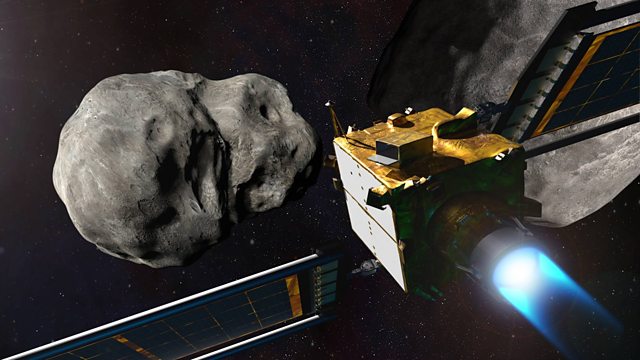The final moments of DART
As the images trickle in from NASA’s DART mission, we ask whether the mission was a success. Also this week, Roland visits a vast biobank storing 20 years of genetic information.
NASA’s latest mission, DART hit the headlines this week after the space agency’s satellite successfully collided with a far off asteroid. The mission acts as a demonstration of Earth’s first planetary defence system. Jon Amos, one of 91�ȱ�’s Science correspondents, talks Roland through the final moments of the DART satellite. Although the collision was a success, we may have to wait a little longer before we know if the asteroid’s trajectory has been altered…
Simone Pirrotta, project manager at the Italian Space Agency, has more to add. His nifty camera system broke away 10 days before DART’s collision, ensuring its own survival. This celestial drive by is guaranteed to provide scientific data to get excited about.
Also this week, we visit the China Kadoorie Biobank. Twenty years in the making, it houses a collection of over half a million genetic samples, which might help identify links between our own genetic compositions and illness. Roland Pease visited them in Oxford to find out more.
Finally, a new review describes the use of mercury by ancient Mayans. The metal is famous for its use across a plethora of civilizations throughout history. Andrea Sella from University College London, tells Roland how his favourite element underpins industrialisation across the ages and the globe.
There are over 30,000 species of fish – that’s more than all the species of amphibians, reptiles, birds and mammals combined. But despite the sheer diversity of life on Earth, we still tend to think of all fish in roughly the same way: with an oblong scaly body, a tail and pairs of fins. Why? And is that really the case? Crowdscience listener and pet fish-owner Lauria asked us to dive into the depths of this aquatic world to investigate why fish are shaped the way they are. Featuring fossils, flippers and plenty of fish, presenter Anand Jagatia makes a splash exploring the fascinating story of fish evolution, how they came to be such a different shape from mammals and even how some mammals have evolved to be more like fish.
Image: An illustration of the DART spacecraft headed toward its target
Credit: NASA/John Hopkins APL
Last on
More episodes
Broadcasts
- Sat 1 Oct 2022 23:06GMT91�ȱ� World Service South Asia & East Asia only
- Sun 2 Oct 2022 00:06GMT91�ȱ� World Service except East Asia & South Asia
Podcast
-
![]()
Unexpected Elements
The news you know, the science you don't


